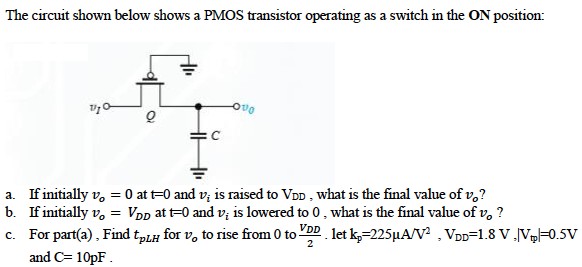The circuit shown below shows a PMOS transistor operating as a switch in the ON position. (a) If initially vO= 0 and at t = 0, vI is raised to VDD, what is the final value VoH reached at the output? (b) If initially vO = VDD and at t = 0, vI is lowered to 0 V, what is the final value VOL reached at the output? (c) For the situation in (a), find tPLH for vO to rise from 0 to VDD/2. Let kp = 225 uA/V^2, VDD = 1.8 V, and |Vtp| = 0.5 V and C = 10 pF.



You'll get a detailed, step-by-step and expert verified solution.
 Work With Experts to Reach at Correct Answers
Work With Experts to Reach at Correct Answers